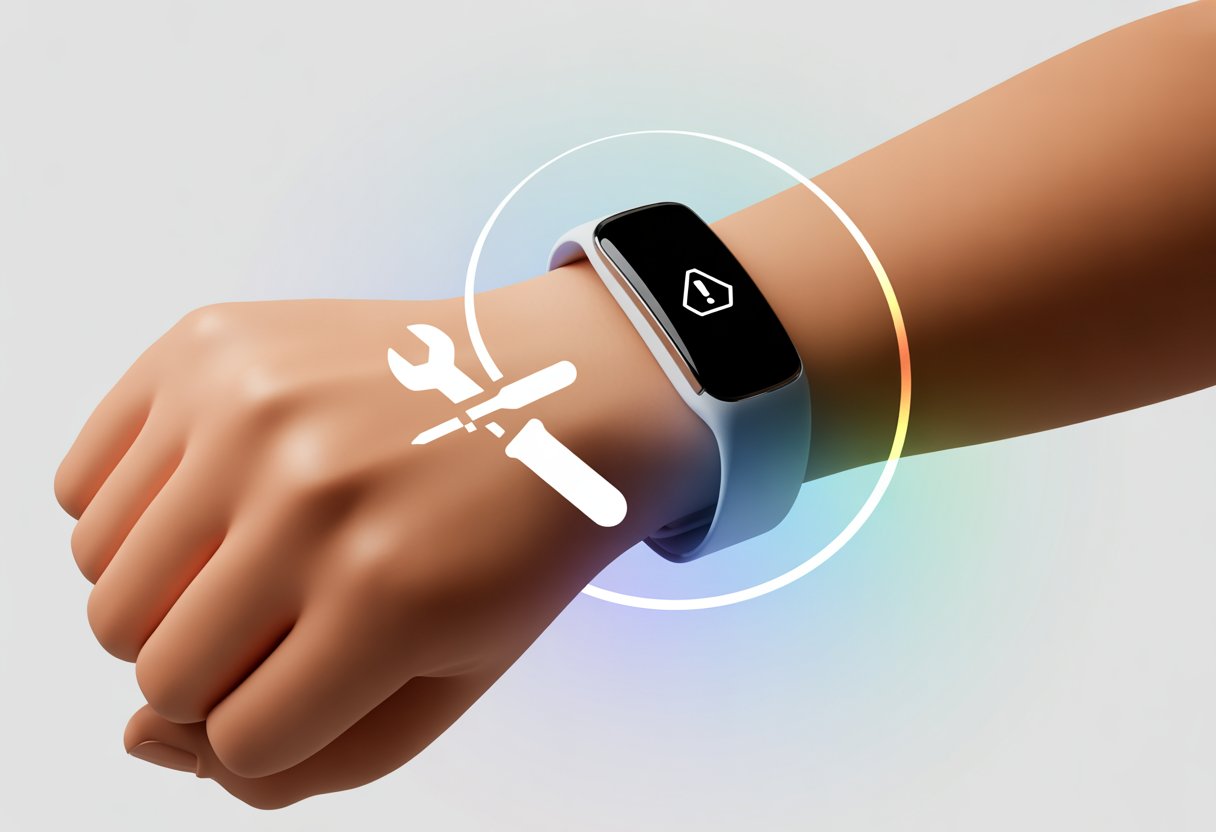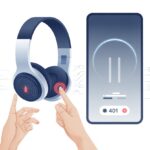You know the feeling—you’re ready to crush a workout, all hyped up, and then your fitness tracker suddenly flashes “Error Code 11.” Motivation? Gone. Now you’re fiddling with buttons and rebooting every device in sight. The fix for error code 11 usually comes down to checking if the tracker’s belt is lined up right, looking for belt friction, or just giving the sensors a quick wipe. No fancy engineering degree needed, thankfully.

Sure, it’s a hassle, but really, it beats counting steps in your head. If your treadmill or tracker acts up and stops after a few seconds, this error is just its way of begging for some attention. You can handle it—and honestly, anyone can, as long as they’re up for a quick fix.
Let’s break down the simple steps to kick error code 11 out so you can get back to smashing your daily goals. There’s something satisfying about outsmarting a stubborn gadget, right? If you need a hint right now, try realigning the belt or look for jammed parts—just like folks suggest on the Treadmill Doctor forum.
Demystifying Fitness Tracker Error Code 11
Getting hit with a cryptic error code mid-workout? Yeah, we’ve all been there. Error code 11 is especially annoying, leaving us staring at the console like it’s about to reveal our future.
What Triggers Error Code 11 and Its Evil Cousins
Error code 11 usually pops up when the fitness tracker or treadmill senses something off inside its little brain. Most of the time, it’s a speed sensor, belt friction, or a motor problem. If the treadmill’s speed doesn’t match what it expects, the console throws a fit and flashes that number.
A dry or misaligned belt can easily cause trouble, even if it’s brand new. Other error codes, like E1 or E-11, show up for similar reasons—think of them as the drama siblings in the family of technical issues. If unplugging and restarting doesn’t clear the error, try troubleshooting the belt alignment or lubricate it, as described for similar treadmill error messages.
How Error Codes Differ Across Fitness Trackers
Wouldn’t it be nice if all fitness trackers spoke the same language? They really don’t. Error code 11 on one device might mean a speed sensor issue, while another brand uses it for a control board problem. Manufacturers love to keep us guessing, or maybe they just want to keep tech support busy.
Sometimes, treadmills and trackers use numbers and letters interchangeably, so E11 and 11 might both show up in your manual. To figure out what’s actually wrong, you’ll probably need to check the brand’s documentation or poke around online FAQs, like these for Octane Fitness.
| Model | Error 11 Meaning |
|---|---|
| Octane Fitness | Speed/incline motor issue |
| Alliance Fitness | Sensor or belt problem |
| Generic Treadmill | Usually speed sensor fault |
Why Your Console Display Loves Drama
Let’s be real: the console display lives for drama. The moment it feels neglected or unhappy, it flashes error codes like a cat flopping onto your keyboard for attention. Instead of clear language, we get numbers that could mean anything from a quick fix to a total meltdown.
Treadmills and trackers throw these tantrums mostly to protect themselves from real damage. Error messages are annoying, sure, but if you know what to look for and don’t panic, they can actually help. Try a quick reset, clean the sensors, or give the speed sensor a gentle nudge—sometimes that’s all it takes. For more tips, check out these treadmill error messages and fixes.
Step-By-Step Fixes for Error Code 11
We all want our treadmill or tracker to just work, but Error Code 11 stops us cold. Sometimes it’s a sensor acting up, sometimes it’s just hardware that needs a little nudge. Let’s get into four common fixes—no white lab coat required.
Unsticking the Treadmill—Literal and Metaphorical
If the treadmill flashes Error Code 11, the first move is to unplug it for a minute. Electronics like a quick nap, don’t they? Next, check the walking belt by lifting it slightly—does it stick or rub? A misaligned or tight belt feels like running with your shoelaces tied together.
Look for objects hiding under the belt. Socks have a way of sneaking in. Once everything looks clear, turn the treadmill back on and listen for weird noises. If the belt still won’t move, try lubricating it as the owner’s manual suggests. For step-by-step instructions, the Treadmill Doctor has some solid advice if the belt, motor, or sensors are acting up.
When Calibration Is the Hero You Deserve
Sometimes, Error Code 11 pops up because the treadmill speed and the console don’t agree. Calibration can help the speed sensor and control board start talking again.
To calibrate, look for a “calibration mode” in the manual (it’s usually hidden behind some button combo). In this mode, the treadmill runs through different speeds and updates its memory. If you skip this step, the treadmill might think you’re sprinting when you’re just strolling. If you’re lost, check troubleshooting guides for step-by-step help.
Drive System Shenanigans
Error Code 11 sometimes points right at the drive system. The motor, rollers, or belt might be plotting against your fitness streak.
Visually inspect the drive belt for cracks, fraying, or anything that screams “replace me.” The motor should spin easily when the belt is off. If the walking belt slips or stutters, tightening or replacing the drive belt might do the trick.
- Unplug the treadmill.
- Remove the side cover.
- Check the tightness and alignment of the drive belt.
- Look for dirt or debris on the rollers.
Once you put everything back together, cross your fingers and give it a test run.
Control Board: The Not-So-Silent Partner
The control board hides under the hood but pulls all the strings. If nothing else works, maybe the control board is just having a bad day.
Check the board for obvious trouble. Burn marks, loose wires, or that “uh-oh” electrical smell? All red flags. Sometimes a loose connection causes Error Code 11. Gently press down on connectors (with the treadmill unplugged!) and see if any wires wiggle.
If nothing helps, you might have to swap the board, and that’s probably a job for a pro. For more about control board errors and how to deal with them, see guides like this one.
The Magical World of Belt, Motor, and Sensors
Sometimes, the treadmill feels less like fitness magic and more like a grumpy robot. When error code 11 shows up, it’s usually because the belt, motor, or sensors need a little attention.
Belt Friction: When Your Treadmill Wants a Massage
Let’s be honest—treadmill belts need some love. If the belt gets dry or misaligned, it’ll start complaining with weird noises or sudden error codes. Ignore the squeaks, and friction just builds up, making the whole thing run rough.
First, check if the belt is centered and slides smoothly. If it tugs, skips, or sticks, clean it and give it a massage with treadmill lubricant. A dry or dirty belt creates more resistance, so the motor has to work harder, and that’s when error code 11 likes to pop up. If it’s too tight or too loose, use the adjustment bolts on the back—think of it as your treadmill’s own chiropractor visit.
Try this checklist:
- Look for dirt and wear
- Check belt alignment
- Lubricate every few months
If you want more help, here’s a guide to fixing belt friction.
Motor Madness and Fan-tastic Malfunctions
Pop the hood—the motor is the heart of your treadmill. If it struggles or the fan isn’t spinning, your home gym performance takes a hit. Error code 11 might mean the motor’s overheating or not getting steady power.
Dust in the motor compartment can easily cause overheating. Power off, unplug, and gently vacuum around the motor and fan. This gives your treadmill a breath of fresh air and can solve temperature-related errors. If the error sticks around, the speed sensor or control board might be the real troublemakers. Dirty or loose parts cause error codes to pop up like party crashers.
Calibration matters here, too. Some treadmills let you run a calibration mode from the console so everything works together again. If nothing’s working, check the tech details in the Life Fitness T-Series troubleshooting guide.
Common Error Codes That Gatecrash the Party
Some error codes just love to ruin a workout, turning a quick jog into a troubleshooting marathon. Knowing what they mean helps you get back to sweating instead of stressing.
The Tale of E1: The Speed Sensor’s Soap Opera
Nothing kills a fitness vibe faster than an E1 error code. You hop on, press start, and—plot twist—the treadmill can’t figure out how fast the belt’s moving. E1 usually pops up when the speed sensor refuses to talk to the console.
Here’s what usually causes it:
- Loose or dirty speed sensor
- Faulty sensor wire
- Dust or debris blocking the sensor
To send E1 packing, start by cleaning the sensor area. If the code sticks around, check the wiring for damage. Sometimes, these moody sensors just want a quick reset. For more on E1 and its dramatic exits, check out these treadmill error codes explained.
Meet E2: When Incline Calibration Goes on Strike
Just when you think things are finally looking up, the E2 error pops up and refuses to let your treadmill calibrate the incline. Basically, this code means the treadmill’s incline system isn’t in the mood to cooperate today. Usually, E2 shows up for a few reasons:
- The incline motor gets stuck
- Wiring on the incline unit comes loose
- Calibration just won’t finish—or maybe never even starts
Here’s what you can try: unplug the treadmill, wait about a minute, then plug it back in. That old “turn it off and on again” trick sometimes works wonders. After that, try running a calibration from the settings menu—if the machine lets you. Still stuck? Time to dig up the manual or maybe call in a pro. If you want to dig deeper, this error code guide covers E2 and other incline headaches.
E5 and E01: A Communication Breakdown
E5 and E01 usually show up when the treadmill’s electronics stop talking to each other. Suddenly, wires that should be working together just… don’t, and your tracker gives up.
You might notice:
- The screen freezes
- The buttons don’t do anything
- You get beeping, but nothing else happens
Start by checking all the cables between the screen and the circuit board. Unplug and replug them—sometimes they just need a nudge. If the errors keep coming back, the main circuit board or console might need fixing or replacing. There’s more info in this common error codes guide.
When to Call the Treadmill Whisperer
You can only DIY so much before the treadmill makes it clear you’re out of your depth. Some problems just don’t make sense, and certain fixes could void your warranty faster than you can say “Error 11.”
Signs It’s Time for Professional Help—For the Treadmill
If Error Code 11 keeps flashing no matter how many times you reset, unplug, or glare at the machine, that’s a big warning sign. Sometimes the control board is just not playing nice, or the speed sensor has decided it’s done. If you hear weird grinding or burning smells, or the speed randomly jumps from a slow walk to full blast, it’s time to back off.
When the display flickers, the buttons stop working, or the belt runs crooked even after you’ve tried to fix it, don’t risk making things worse or hurting yourself by poking around inside.
Other red flags include:
- The power keeps cutting out
- You get zapped with static or a small electric shock
- Trying online “fixes” just seems to make everything worse
If the basics aren’t working, just call an expert. For more details on Error 11, this guide to treadmill speed issues is worth a look.
Warranty Woes and Service Solutions
Before you grab a screwdriver and channel your inner repair genius, check if your treadmill’s still under warranty. Opening the case, swapping the control board, or messing with the motor could mean you’ll end up paying for even the smallest fix.
Most treadmills have warranties for both parts and labor, but only if certified technicians do the work. Usually, you can find a toll-free number or an online form to request service. Keep your receipt and serial number handy—it’ll save you from playing flashlight detective with the model number.
If your warranty’s expired, calling a local treadmill tech usually makes more sense (and costs less in the long run) than guessing your way through repairs. Some companies even offer expert repair help and resources if you want to try finding the right part before you try again. Sometimes, it’s just better to let the pros handle the tricky stuff. Your fitness goals—and your sanity—will thank you.
Preventing Future Meltdowns
Nobody wants to see error 11 again, especially if you’re just trying to get a workout in, not start a side gig as a treadmill mechanic. So, what can you do to avoid another round of frustration next time your treadmill or tracker acts up?
Maintenance Tips Your Treadmill Will Thank You For
Treat your treadmill like the high-maintenance pet it sometimes pretends to be. Wipe it down after each workout to keep sweat and dust away from the console. Every couple of weeks, clean under the belt, and make sure the belt tension isn’t tighter than your gym shorts.
Plug the machine into a surge protector—no one wants fried circuits during a storm. Check regularly for loose wires, weird noises, or buttons that don’t behave. Nobody likes surprise breakdowns, right?
Keep the belt lubricated. Dry belts love to cause trouble, including those annoying error codes. If you want step-by-step help, this guide on handling treadmill error codes is a solid place to start.
Calibrating Like a Pro (Even If You’re Not One)
Honestly, calibration’s easier than piecing together flat-pack furniture—and you’ll probably end up with less frustration, too.
Just go to the console display settings and hunt for a calibration or reset option. If it’s not obvious, I’d say grab the manual or search for a digital copy—no shame in that.
Most treadmills let you press a certain button combo, like holding the stop and speed buttons together, to kick off calibration. This tells the machine to relearn and match the belt speed with what you see on the screen.
Getting calibration right means you won’t get those annoying speed mismatches. It also helps dodge error 11 from popping up in the first place.
Don’t skip calibration after you adjust the belt, swap out the motor, or see a weird error message. It’ll keep your treadmill running smoother—and maybe, just maybe, stop it from complaining so much.
If you want step-by-step help, check out this breakdown of treadmill calibration and speed fixes.
- Best fitness trackers for MyFitnessPal integration: Because Your Chips Need Logging - October 3, 2025
- How to use a fitness tracker for Zumba: Counting Steps While You Shake It - October 3, 2025
- How to Fix Bluetooth Headphone Volume Issues and Finally Hear Your Playlist, Not Your Own Frustration - October 2, 2025






